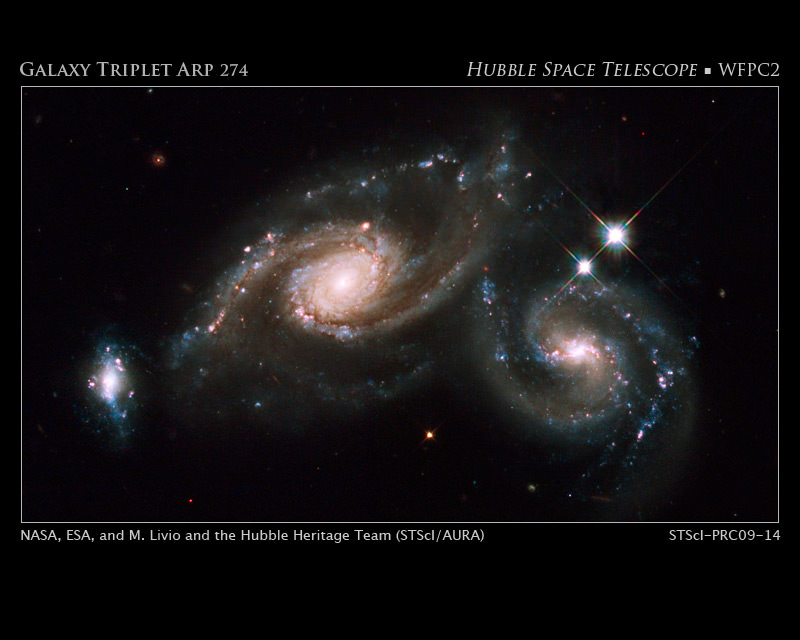How does raw data from the Hubble Space Telescope end up to become a finished gorgeous color image, like the one of Arp 274, above? It’s an interesting process, because the cameras on Hubble do not take color pictures.
The Hubble team released a video today showing the process of creating an image of Arp 274:
Color images from the spacecraft are assembled from separate black & white images taken through color filters. For one image, the spacecraft has to take three pictures, usually through a red, a green, and a blue filter and then each of those photos gets downlinked to Earth. They are then combined with software into a color image. This happens automatically inside off-the-shelf color cameras that we use here on Earth. But Hubble has almost 40 color filters ranging from ultraviolet (“bluer” than our eyes can see,) through the visible spectrum, to infrared (“redder” than what is visible to humans.) This gives the imaging teams infinitely more flexibility, allowing them to eke out whatever science information they are looking for, as well as, sometimes, allowing them to take a little artistic license.


RGB it is! When the cosmic ray streaks and dots are removed, how can they tell which of the ‘dots’ aren’t foreground stars or background galaxies? Those that appear in every image? I wonder how many supernova have been ‘accidentally’ removed?
The foreground stars are “fixed” where cosmic rays are random. Stacking programs (DeepSkyStacker, MaximDL, PixInsight etc. can run an algorithm to remove the random cosmic ray.
Foreground stars, and therefore bright objects, tend to produce diffraction spikes.
The median of a set of images eliminates the transient cosmic ray “flashes”. Also, the output RGB colors don’t have to correspond to the observed wavelengths, hence the term “false color image”. Foreground stars can be recognized by their brightnesses and colors, and if necessary, by the Doppler shifts of their spectra (indicating speeds along the line of sight very different from those of the galaxies).
It is just so beautiful.
So another words it is like photoshop or airbrushed, etc.. . I thought x-ray’s and the other etc’s took care of that. Don’t tell me “thought” screwed up again! If thats the case, I gotta get him outta my head…lol.